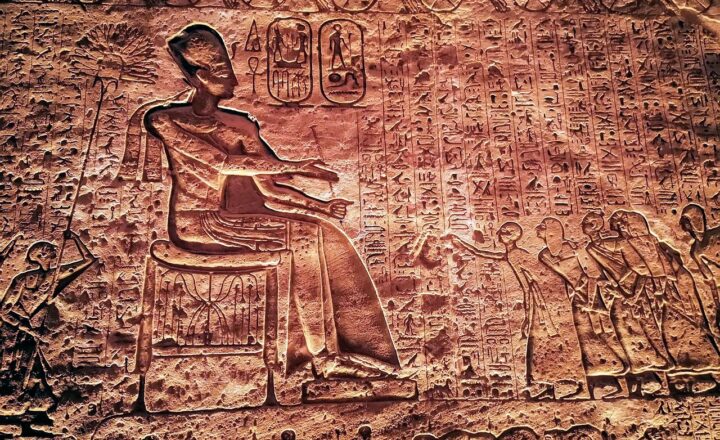The History of Crop Circles: Hoax or Evidence of Alien Life?
November 15, 2024

Crop circles have fascinated people for decades, igniting discussions and debates that span the realms of science, art, and even spirituality. Characterized by intricate patterns carved into fields of crops, primarily cereal crops like wheat and barley, these enigmatic designs have led some to view them as simple hoaxes while others suggest they are evidence of extraterrestrial intelligence. This article delves deep into the history, patterns, theories, and cultural impacts of crop circles, seeking to unravel the mystery behind these curious formations.
1. The Emergence of Crop Circles
The phenomenon of crop circles dates back several centuries, though it gained significant public attention in the late 20th century. The earliest documented instances can be traced to England, with reports of unusual crop formations appearing as far back as the late 1600s. Notably, a pamphlet from 1678 described a “mysterious phenomenon” in Hertfordshire that depicted a circular pattern in a hayfield, believed to be caused by the Devil. However, interest in these formations peaked during the 1970s and 1980s, coinciding with a series of stunningly intricate designs appearing overnight in southern England.
Interestingly, as media coverage increased, so did the complexity of the designs. The artistic aspects of the circles began to emerge, with intricate geometric shapes and patterns captivating the public’s imagination. But the question remained: Who or what was responsible for creating these complex formations?
2. Hoaxes: The Human Element
Several individuals have stepped forward claiming responsibility for creating crop circles, asserting they are nothing more than clever hoaxes. In 1991, two men, Doug Bower and Dave Chorley, came forward to confess that they had been creating crop circles using nothing but planks, ropes, and a lot of creative flair. They successfully crafted various designs using simple tools, leading many to dismiss the idea that crop circles could be anything other than the product of human effort.
Some skeptics argue that these admissions account for the majority of crop circle formations. They point out that many of the designs are too neat and symmetrical to be the work of an alien craftsman. The meticulous precision involved in creating these formations only adds fuel to the fire, leading to significant discussions within scientific communities about the true origins of crop circles.
3. The Theories Behind Crop Circles: Alien Involvement?
While many believe mass hoaxers are responsible for the majority of crop circles, others speculate that these formations may represent communication from extraterrestrial beings. Proponents of this theory argue that the complexity and scale of some crop circles exceed the capabilities of human creators or that the patterns convey messages from otherworldly sources.
An array of intriguing theories has emerged to support this idea, from linking crop circles to ancient myths and spiritual symbols to suggesting they might be landing zones for alien craft. Some theorists even claim that the patterns contain mathematical sequences recognizable to advanced civilizations.
In 2000, a particularly striking formation appeared in a barley field in Wiltshire, England, gaining attention for its resemblance to the well-known “Milky Way” layout. The size and intricacy of this formation led to widespread speculation about a connection between crop circles and a universal language used by extraterrestrial visitors.
4. Scientific Examination: What Do the Experts Say?
Scientists have largely approached crop circles with skepticism, conducting various studies to understand their formation better. Research has examined the environmental impacts, plant life, and soil composition surrounding crop circle sites. Some studies claim that certain crop circles exhibit phenomena such as changes in soil composition and plant growth direction, suggesting factors beyond simple human intervention.
For instance, a study conducted by researcher Dr. Karlis O. M. W. Peil, published in the journal “Nature,” claimed to identify unusual geomagnetic and electromagnetic fields at certain crop circle sites, hinting at unknown-natural phenomena. Nevertheless, this research does not definitively prove alien involvement or the existence of supernatural forces.
Furthermore, the sporadic appearance of crop circles in regions devoid of easy access by humans weakens the argument for hoaxes. This evidence often invites added speculation regarding untold influences.
5. Cultural Influence: The Mystique of Crop Circles
Crop circles have burgeoned into a prominent aspect of modern culture. Their sensationalist portrayal in movies, books, and television shows has embedded them in the collective psyche as symbols of mystery and intrigue. The likes of science fiction films and popular literature owe a part of their themes to the lore surrounding crop circles, blurring the lines between reality and fiction.
In recent years, crop circles have also attracted tourists, particularly in the United Kingdom, where enthusiasts flock to take guided tours of known sites. Events like crop circle exhibitions and workshops now provide visitors with the chance to learn about these formations, regardless of their origin.
Finally, artists inspired by the patterns have also created temporary installations in urban settings, reflecting the creative spark that crop circles ignited in contemporary society. The longstanding fascination with crop circles showcases humanity’s enduring desire to explore the unknown, whether through the lens of science, art, or the possibility of extraterrestrial life.
Conclusion: Hoax or Alien Evidence?
The enigma of crop circles continues to intrigue us, providing fertile ground for speculation, creativity, and debate. Whether they are merely the products of human ingenuity or possible signs of extraterrestrial life is yet to be determined. As scientists explore more about these formations, society’s collective perception of crop circles remains tantalizingly complex. Ultimately, as long as curiosity thrives in humanity, the mystery of crop circles will persist, keeping both believers and skeptics engaged in ongoing discussions.
It is this blend of skepticism and wonder that makes the story of crop circles an exciting exploration—one that encourages us to look beyond the ordinary and seek answers from the universe’s strangest corners.








